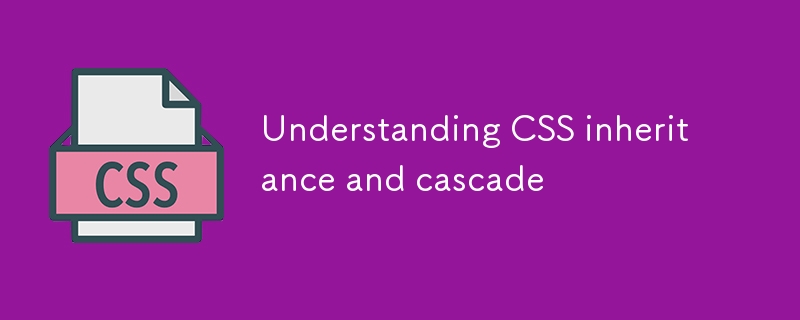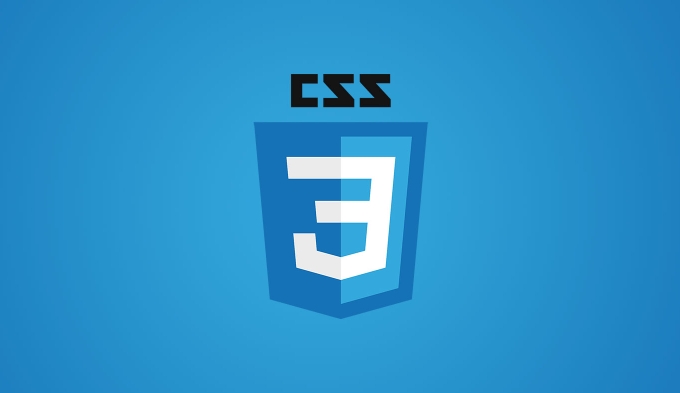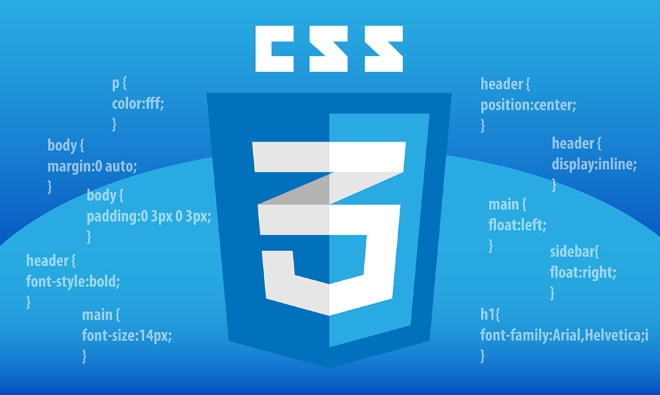 <p> The inheritance and casing mechanism of CSS is a very basic but easily overlooked part of front-end development. When many people write styles, they find that some styles are not effective or are covered by other styles. The problem is often due to the lack of understanding of inheritance and casing. This article does not go around the corner, but focuses on the key points.
<p> The inheritance and casing mechanism of CSS is a very basic but easily overlooked part of front-end development. When many people write styles, they find that some styles are not effective or are covered by other styles. The problem is often due to the lack of understanding of inheritance and casing. This article does not go around the corner, but focuses on the key points.

What is CSS inheritance?
<p> Not all CSS attributes are automatically "passed" to child elements, but some of them will. For example, text-related attributes such as font, color, and line height will be inherited by child elements by default. <p> For example:
<p> For example:<div class="parent"> <p>This text will inherit the parent's text color</p> </div>
.parent {
color: blue;
}<p> In the example above, the <p> tag does not have a color set, but it displays blue because color attribute is inheritable.  <p> But layout class attributes such as
<p> But layout class attributes such as border , margin , and padding will not be inherited. If you want the child elements to use these values, you have to write them explicitly yourself.<p> Common inheritable attributes include:-
color -
font-family,font-size,font-weight -
text-align,text-transform -
line-height -
visibility
How does the casing mechanism work?
<p> Cascade is the process by which the browser decides which CSS rules to use. Multiple rules may match an element at the same time, so who should I listen to? Here are a few key points:- Source priority: User Agent Style < User Style < Developer Style (that is, what you wrote)
- Importance:
!importantrules have higher priority, but are not recommended for abuse. - Specificity: ID > Class/Attribute Selector > Tag Selector
- Order: The same specific rules, the following will cover the previous one
p {
color: red;
}
.content p {
color: green;
}<p> Even if both match <p> , .content p is more specific, so the text is green.
Several common pitfalls in actual development
- <p> Global style pollution
When using a universal selector (such as*orbody *), elements that should not be affected may be accidentally affected, especially content in third-party component libraries. - <p> Side effects of inheritance
For example, ifhtml { font-size: 16px; }is set, and then a child element usesemorrem, the calculated size is not expected. Debugging this kind of problem is a bit troublesome, but as long as you understand the inheritance chain, it is not difficult to solve. - <p> The cascading order causes the style to not take effect
It is common when multiple frameworks or components are mixed, such as Tailwind and custom CSS exist at the same time. At this time, you can use the browser developer tools to check which rules are applied and adjust the specificity of the selector.
How to handle inheritance and casing more efficiently?
- Try to avoid using
!important, unless it is special, it can complicate maintenance. - Use BEM or similar naming specifications to improve the readability and specific control of class names.
- Reasonably organize the CSS file structure , separate reset styles, basic styles, component styles, and theme styles to reduce conflicts.
- Make good use of the Computed panel of browser developer tools to see which rules finally take effect.
<p> Basically that's it. Inheritance and casing don't seem complicated, but it can easily become the culprit of "why my style doesn't work" in real projects. If you understand the logic behind these mechanisms, you can avoid many pitfalls when writing styles.
The above is the detailed content of Understanding CSS inheritance and cascade. For more information, please follow other related articles on the PHP Chinese website!

Hot AI Tools

Undress AI Tool
Undress images for free

Undresser.AI Undress
AI-powered app for creating realistic nude photos

AI Clothes Remover
Online AI tool for removing clothes from photos.

Clothoff.io
AI clothes remover

Video Face Swap
Swap faces in any video effortlessly with our completely free AI face swap tool!

Hot Article

Hot Tools

Notepad++7.3.1
Easy-to-use and free code editor

SublimeText3 Chinese version
Chinese version, very easy to use

Zend Studio 13.0.1
Powerful PHP integrated development environment

Dreamweaver CS6
Visual web development tools

SublimeText3 Mac version
God-level code editing software (SublimeText3)
 CSS tutorial for creating loading spinners and animations
Jul 07, 2025 am 12:07 AM
CSS tutorial for creating loading spinners and animations
Jul 07, 2025 am 12:07 AM
There are three ways to create a CSS loading rotator: 1. Use the basic rotator of borders to achieve simple animation through HTML and CSS; 2. Use a custom rotator of multiple points to achieve the jump effect through different delay times; 3. Add a rotator in the button and switch classes through JavaScript to display the loading status. Each approach emphasizes the importance of design details such as color, size, accessibility and performance optimization to enhance the user experience.
 Addressing CSS Browser Compatibility issues and prefixes
Jul 07, 2025 am 01:44 AM
Addressing CSS Browser Compatibility issues and prefixes
Jul 07, 2025 am 01:44 AM
To deal with CSS browser compatibility and prefix issues, you need to understand the differences in browser support and use vendor prefixes reasonably. 1. Understand common problems such as Flexbox and Grid support, position:sticky invalid, and animation performance is different; 2. Check CanIuse confirmation feature support status; 3. Correctly use -webkit-, -moz-, -ms-, -o- and other manufacturer prefixes; 4. It is recommended to use Autoprefixer to automatically add prefixes; 5. Install PostCSS and configure browserslist to specify the target browser; 6. Automatically handle compatibility during construction; 7. Modernizr detection features can be used for old projects; 8. No need to pursue consistency of all browsers,
 What is the difference between display: inline, display: block, and display: inline-block?
Jul 11, 2025 am 03:25 AM
What is the difference between display: inline, display: block, and display: inline-block?
Jul 11, 2025 am 03:25 AM
Themaindifferencesbetweendisplay:inline,block,andinline-blockinHTML/CSSarelayoutbehavior,spaceusage,andstylingcontrol.1.Inlineelementsflowwithtext,don’tstartonnewlines,ignorewidth/height,andonlyapplyhorizontalpadding/margins—idealforinlinetextstyling
 Creating custom shapes with css clip-path
Jul 09, 2025 am 01:29 AM
Creating custom shapes with css clip-path
Jul 09, 2025 am 01:29 AM
Use the clip-path attribute of CSS to crop elements into custom shapes, such as triangles, circular notches, polygons, etc., without relying on pictures or SVGs. Its advantages include: 1. Supports a variety of basic shapes such as circle, ellipse, polygon, etc.; 2. Responsive adjustment and adaptable to mobile terminals; 3. Easy to animation, and can be combined with hover or JavaScript to achieve dynamic effects; 4. It does not affect the layout flow, and only crops the display area. Common usages are such as circular clip-path:circle (50pxatcenter) and triangle clip-path:polygon (50%0%, 100 0%, 0 0%). Notice
 Styling visited links differently with CSS
Jul 11, 2025 am 03:26 AM
Styling visited links differently with CSS
Jul 11, 2025 am 03:26 AM
Setting the style of links you have visited can improve the user experience, especially in content-intensive websites to help users navigate better. 1. Use CSS's: visited pseudo-class to define the style of the visited link, such as color changes; 2. Note that the browser only allows modification of some attributes due to privacy restrictions; 3. The color selection should be coordinated with the overall style to avoid abruptness; 4. The mobile terminal may not display this effect, and it is recommended to combine it with other visual prompts such as icon auxiliary logos.
 How to create responsive images using CSS?
Jul 15, 2025 am 01:10 AM
How to create responsive images using CSS?
Jul 15, 2025 am 01:10 AM
To create responsive images using CSS, it can be mainly achieved through the following methods: 1. Use max-width:100% and height:auto to allow the image to adapt to the container width while maintaining the proportion; 2. Use HTML's srcset and sizes attributes to intelligently load the image sources adapted to different screens; 3. Use object-fit and object-position to control image cropping and focus display. Together, these methods ensure that the images are presented clearly and beautifully on different devices.
 What are common CSS browser inconsistencies?
Jul 26, 2025 am 07:04 AM
What are common CSS browser inconsistencies?
Jul 26, 2025 am 07:04 AM
Different browsers have differences in CSS parsing, resulting in inconsistent display effects, mainly including the default style difference, box model calculation method, Flexbox and Grid layout support level, and inconsistent behavior of certain CSS attributes. 1. The default style processing is inconsistent. The solution is to use CSSReset or Normalize.css to unify the initial style; 2. The box model calculation method of the old version of IE is different. It is recommended to use box-sizing:border-box in a unified manner; 3. Flexbox and Grid perform differently in edge cases or in old versions. More tests and use Autoprefixer; 4. Some CSS attribute behaviors are inconsistent. CanIuse must be consulted and downgraded.
 Demystifying CSS Units: px, em, rem, vw, vh comparisons
Jul 08, 2025 am 02:16 AM
Demystifying CSS Units: px, em, rem, vw, vh comparisons
Jul 08, 2025 am 02:16 AM
The choice of CSS units depends on design requirements and responsive requirements. 1.px is used for fixed size, suitable for precise control but lack of elasticity; 2.em is a relative unit, which is easily caused by the influence of the parent element, while rem is more stable based on the root element and is suitable for global scaling; 3.vw/vh is based on the viewport size, suitable for responsive design, but attention should be paid to the performance under extreme screens; 4. When choosing, it should be determined based on whether responsive adjustments, element hierarchy relationships and viewport dependence. Reasonable use can improve layout flexibility and maintenance.






